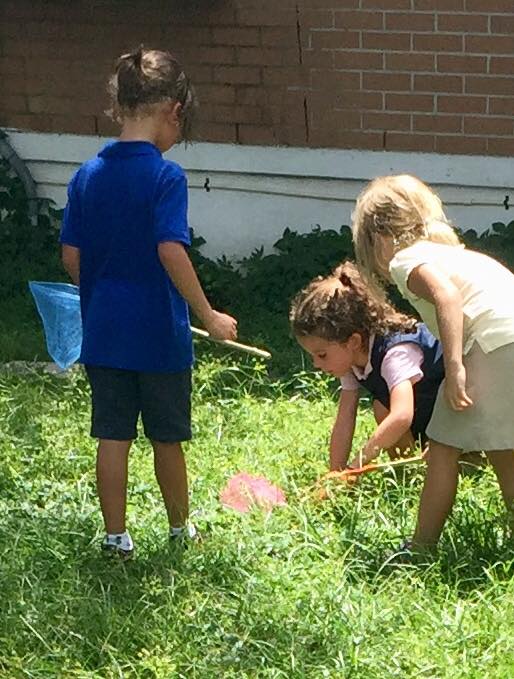“The child is constantly absorbing impressions from the environment: and yet does this without knowing that it is doing so and without willing it” ~Maria Montessori
The young child’s mind also possesses a very unique power which is seen at both levels, but most powerfully at the birth to age three level. It is at this stage that developing intelligence is the most effortless. The child is in a constant state of acquiring an abundance of knowledge without effort and without conscious knowledge of the accumulation of learning that is taking place.
The creative nature of the absorbent mind is the mind’s capacity to self-construct. The psychic or spiritual embryo begins at birth. “To explain the child’s self-construction, Montessori concluded he must possess within him, before birth, a pattern for his psychic unfolding. She referred to this inborn, psychic entity of the child as a ‘spiritual embryo’” (Montessori: A Modern Approach, Lillard, p. 30). This phenomenon along with horme – the drive to be functionally independent – work together to drive the process of development. It is through this process that the child will develop the characteristics of his own unique personality. It is also the process by which the acquisition of language; fine and gross motor development; and order and orientation will take place. As the spiritual embryo is nurtured in the child, he will also develop his ability to make choices.
“To explain the child’s self-construction, Montessori concluded he must possess within him, before birth, a pattern for his psychic unfolding. She referred to this inborn, psychic entity of the child as a ‘spiritual embryo’”
As a sponge takes in liquid, so the mind of the young child absorbs information from the environment. The mind can also be compared to a camera. As the child observes the world around him the mind is taking pictures. The pictures are complete, accurate, and unfiltered, ready to be stored for future retrieval. This analogy can be seen in the accumulation of language. Because of the many “pictures” taken by the mind of the environment, the child explodes into his own native language, able to speak in whole sentences with a diverse vocabulary and a distinguishable accent.
The absorbent mind’s conscious development is dependent upon movement. “When the child begins to move, his absorbent mind has already taken in the world unconsciously. Now, as he starts to move, he becomes conscious” (Maria Montessori: Her Life and Work, Standing, p. 111). Gross motor movements are vital to the child’s tendency to explore, but the fine motor movements of the hand are of utmost importance. The hand is described by Dr. Montessori as “the instrument of intelligence” (The Absorbent Mind, Montessori, p. 26). The movements of the hand, manipulating objects in the environment, is what enables the child to move from the unconscious to the conscious self.
All children possess the qualities of the power of the absorbent mind. This universal truth expands across all cultures, regardless of race or creed. It is based on the human tendencies identified by Dr. Montessori.
The role of the teacher in assisting the absorbent mind is best seen in the prepared environment. Dr. Montessori said that the child’s environment should be “rich in motives of activity.” The teacher should understand the needs or tendencies of the child, and assist in providing those things in the environment, specifically the tendencies of order, communication, and manipulation. With these components in place, the absorbent mind of the child will flourish to create the individual within.


